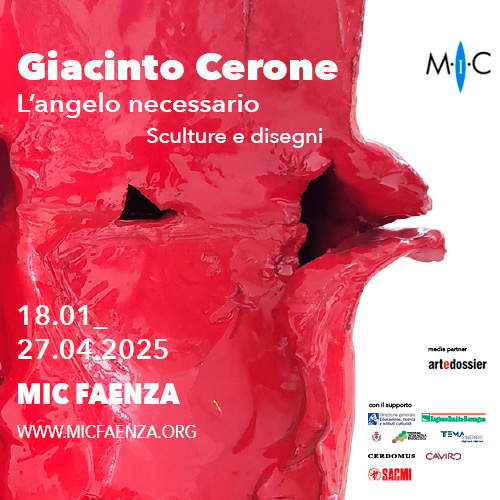Bologna dedicates a rich program of initiatives to Bolognese painting, in anticipation of a major widespread exhibition
A rich program of activities, including guided tours, lectures, workshops and temporary exhibitions, dedicated to Bolognese painting from the Napoleonic age to the beginning of the Great War: this is the project Bologna pittrice | il Lungo Ottocento | il Lungo Ottocento | 1796-1915, curated by Roberto Martorelli and Isabella Stancari, carried out in collaboration with the Municipality of San Giovanni in Persiceto, Confcommercio Ascom Bologna, Fondazione Cassa di Risparmio in Bologna, Genus Bononiae, which will take place between Bologna and San Giovanni in Persiceto from December 1, 2023 to March 17, 2024.
The initiative serves as a preparatory introduction to the exhibition Painting in Bologna in the Long Nineteenth Century 1796 - 1915, scheduled from March 21 to June 30, 2024 as an exhibition spread over numerous exhibition venues. On this occasion there will be an opportunity to see a body of works, many of them never exhibited before, varied in terms of genres and themes represented. The exhibition project, conceived and coordinated by the Civic Museum of the Risorgimento of the Bologna Civic Museums Sector starting with the three photographic albums documenting artistic and architectural production in Bologna in the second half of the 19th century donated by Raffaele Belluzzi (1839-1903), promoter of the museum itself and later its first director, has found the support of numerous institutions, museums, galleries, associations and scholars long engaged in the enhancement and study of the artistic and cultural heritage of the 19th century preserved in the city’s context.
After decades in which the city of Bologna has not devoted a monographic survey to the subject of Bolognese painting, the exhibition aims to propose with new interpretative impetus an overall vision of the richness and complexity of this fervid painting season, taking stock of the new discoveries and biographical reconstructions acquired in recent years.
With the end of papal rule and the entry into the Kingdom of Italy, Bologna entered a tumultuous and extremely complex period: urban, social and economic changes, the beginning of industrialization, the sharpening of social and political struggles, until the entry into the war in 1915. Similar to other urban centers in Italy, this succession of events was also reflected in the sphere of culture and the arts, fostering a close confrontation between academic and avant-garde culture. Even today there is a strong inclination to tout the local art school as “academic,” but without ever going beyond this consideration, which although important, should not be considered exclusive. And this leads to not even fully evaluating the role of the Academy of Fine Arts, which, with its Curlandesi and Baruzzi Competitions, was among the main crossroads of national artistic confrontation.
During the “Long Nineteenth Century,” institutions such as the Collegio Venturoli (1825), associations such as the Francesco Francia (1894) or the Comitato per Bologna Storica e Artistica (1899), the Aemilia Ars art movement that grew up around the figure of Alfonso Rubbiani, and other guilds and cenacles of lesser duration were established in the city. Through its exhibitions, the Society for the Protection of Fine Arts encouraged the sale of works to private individuals, a not inconsiderable incentive for artists to produce less academic works, suitable for a bourgeois and less elitist audience. All this artistic and organizational fervor was also reflected in an impressive number of periodical publications and art magazines, and it helped the development of one of the most important Italian printing houses of the time, namely the Litografia Chappuis, with which artists such as Marcello Dudovich collaborated.
Bologna, while not having the size of other major Italian centers (Milan, Rome, Turin, Genoa), was the geographic and cultural crossroads of the peninsula. 1888 was the year of the turning point. Under Carducci’s magisterium, the city was a de facto candidate for the role of cultural capital of the Third Italy: the celebrations for the eighth centenary of the University and the Esposizione Emiliana placed Bologna at the center of national attention, showing the progress made by the city after the Unification of Italy. In this perspective, art plays a vital role, with the grand Music Pavilion in the Giardini Margherita and the Fine Arts Exhibition in San Michele in Bosco. On the other hand, Bolognese artists would not fail to participate in major national and international exhibitions, often playing a leading role, receiving commissions from royal houses, governments and families of international prominence.
Bologna pittrice | il Lungo Ottocento | 1796 -1915 is thus intended to represent the first project expression of a synergistic effort that aims to bring audiences diversified by age group and interests closer to 19th-century figurative culture, promoting the knowledge of figures, places and collections linked, in various ways, to this artistic production widely witnessed in the territory. Many initiatives will be planned: three temporary exhibitions, thirteen lectures, twenty-three guided tours, a historical re-enactment and twelve locations of a nineteenth-century itinerary, with the intention of emphasizing the role of the best-known artists as well as those unjustly neglected or forgotten.
The full calendar of events is available at www.museibologna.it and at www.storiaememoriadibologna.it/ottocento.
Pictured: Cesare Bacchi, View of the Montagnola Gardens in Bologna (1901; oil on canvas; Bologna, Collegio Artistico Venturoli)
 |
| Bologna dedicates a rich program of initiatives to Bolognese painting, in anticipation of a major widespread exhibition |
Warning: the translation into English of the original Italian article was created using automatic tools. We undertake to review all articles, but we do not guarantee the total absence of inaccuracies in the translation due to the program. You can find the original by clicking on the ITA button. If you find any mistake,please contact us.





























